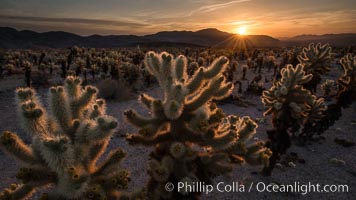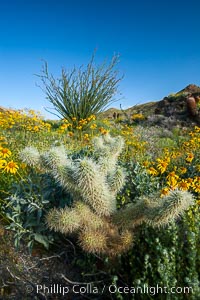
Cholla cactus, brittlebush, ocotillo and various cacti and wildflowers color the sides of Glorietta Canyon. Heavy winter rains led to a historic springtime bloom in 2005, carpeting the entire desert in vegetation and color for months.
Species: Encelia farinosa, Fouquieria splendens, Opuntia
Location: Anza-Borrego Desert State Park, Borrego Springs, California
Image ID: 10975
Species: Encelia farinosa, Fouquieria splendens, Opuntia
Location: Anza-Borrego Desert State Park, Borrego Springs, California
Image ID: 10975
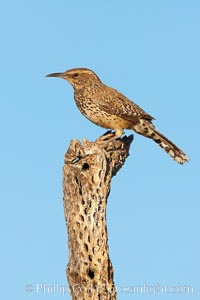
Cactus wren.
Species: Cactus wren, Campylorhynchus brunneicapillus
Location: Amado, Arizona
Image ID: 23003
Species: Cactus wren, Campylorhynchus brunneicapillus
Location: Amado, Arizona
Image ID: 23003
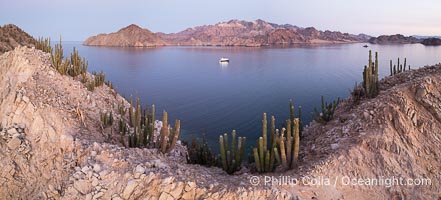
Cardon Cactus grow on Isla Angel de la Guarda at Sunset, Aerial Photo, Sea of Cortez, Mexico. Guardian Angel island is part of the Midriff Islands in Mexico's Sea of Cortez.
Species: Cardon cactus, Elephant cactus, Pachycereus pringlei
Location: Isla Angel de la Guarda, Baja California, Mexico
Image ID: 40340
Species: Cardon cactus, Elephant cactus, Pachycereus pringlei
Location: Isla Angel de la Guarda, Baja California, Mexico
Image ID: 40340
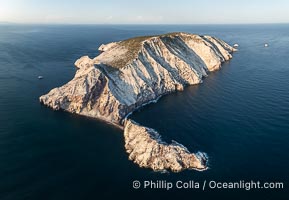
Isla San Pedro Martir at sunset with extensive forest of Cardon Cactus seen on the summit ridge of the island, aerial photo, Sea of Cortez, Mexico. San Pedro Martir Island and its marine life are, since 2002, part of the San Pedro Martir Biosphere Reserve, and is regarded as a natural laboratory of adaptive evolution, similar to that of the Galapagos Islands. It is home to 292 species of fauna and flora (both land-based and aquatic), with 42 species protected by Mexican law, and 30 listed on the Red List of Threatened Species. San Pedro Martir is also unique in the area for its year-round quantity of birds. The island is the only island in the area with a perpetually swirling cloud of sea birds. This is because the water around the island, has some of the most successful marine productivity in the world.
Location: Isla San Pedro Martir, Sonora, Mexico
Image ID: 40397
Location: Isla San Pedro Martir, Sonora, Mexico
Image ID: 40397
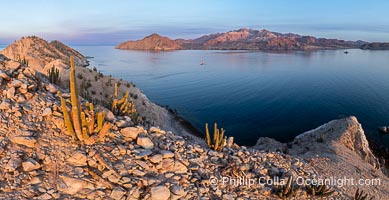
Cardon Cactus grow on Isla Angel de la Guarda at Sunset, Aerial Photo, Sea of Cortez, Mexico. Guardian Angel island is part of the Midriff Islands in Mexico's Sea of Cortez.
Species: Cardon cactus, Elephant cactus, Pachycereus pringlei
Location: Isla Angel de la Guarda, Baja California, Mexico
Image ID: 40338
Panorama dimensions: 4547 x 8842
Species: Cardon cactus, Elephant cactus, Pachycereus pringlei
Location: Isla Angel de la Guarda, Baja California, Mexico
Image ID: 40338
Panorama dimensions: 4547 x 8842
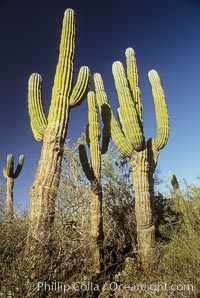
Cardon cactus, near La Paz, Baja California, Mexico. Known as the elephant cactus or Mexican giant cactus, cardon is largest cactus in the world and is endemic to the deserts of the Baja California peninsula. Some specimens of cardon have been measured over 21m (70) high. These slow-growing plants live up to 300 years and can weigh 25 tons. Cardon is often mistaken for the superficially similar saguaro of Arizona and Sonora, but the saguaro does not occupy Baja California.
Species: Cardon cactus, Elephant cactus, Pachycereus pringlei
Location: La Paz, Baja California, Mexico
Image ID: 05498
Species: Cardon cactus, Elephant cactus, Pachycereus pringlei
Location: La Paz, Baja California, Mexico
Image ID: 05498
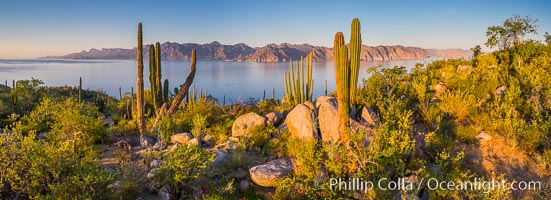
Cardon Cactus on Isla San Jose, Aerial View, Baja California.
Species: Cardon cactus, Elephant cactus, Pachycereus pringlei
Location: Isla San Jose, Baja California, Mexico
Image ID: 33688
Panorama dimensions: 3155 x 8689
Species: Cardon cactus, Elephant cactus, Pachycereus pringlei
Location: Isla San Jose, Baja California, Mexico
Image ID: 33688
Panorama dimensions: 3155 x 8689
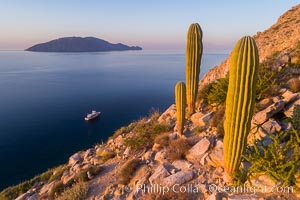
Cardon Cactus on Isla San Diego, Aerial View, Baja California.
Species: Cardon cactus, Elephant cactus, Pachycereus pringlei
Location: Isla San Diego, Baja California, Mexico
Image ID: 33575
Species: Cardon cactus, Elephant cactus, Pachycereus pringlei
Location: Isla San Diego, Baja California, Mexico
Image ID: 33575
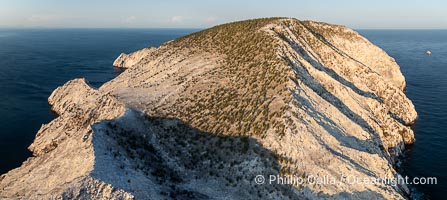
Isla San Pedro Martir at sunset with extensive forest of Cardon Cactus seen on the summit ridge of the island, aerial photo, Sea of Cortez, Mexico. San Pedro Martir Island and its marine life are, since 2002, part of the San Pedro Martir Biosphere Reserve, and is regarded as a natural laboratory of adaptive evolution, similar to that of the Galapagos Islands. It is home to 292 species of fauna and flora (both land-based and aquatic), with 42 species protected by Mexican law, and 30 listed on the Red List of Threatened Species. San Pedro Martir is also unique in the area for its year-round quantity of birds. The island is the only island in the area with a perpetually swirling cloud of sea birds. This is because the water around the island, has some of the most successful marine productivity in the world.
Species: Cardon cactus, Elephant cactus, Pachycereus pringlei
Location: Isla San Pedro Martir, Sonora, Mexico
Image ID: 40398
Species: Cardon cactus, Elephant cactus, Pachycereus pringlei
Location: Isla San Pedro Martir, Sonora, Mexico
Image ID: 40398
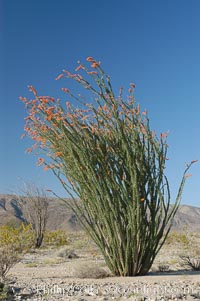
Ocotillo ablaze with springtime flowers. Ocotillo is a dramatic succulent, often confused with cactus, that is common throughout the desert regions of American southwest.
Species: Ocotillo, Fouquieria splendens
Location: Joshua Tree National Park, California
Image ID: 09161
Species: Ocotillo, Fouquieria splendens
Location: Joshua Tree National Park, California
Image ID: 09161
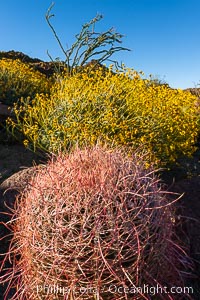
Barrel Cactus and Brittlebush in Anza Borrego Desert State Park, during the 2017 Superbloom.
Location: Anza-Borrego Desert State Park, Borrego Springs, California
Image ID: 33199
Location: Anza-Borrego Desert State Park, Borrego Springs, California
Image ID: 33199
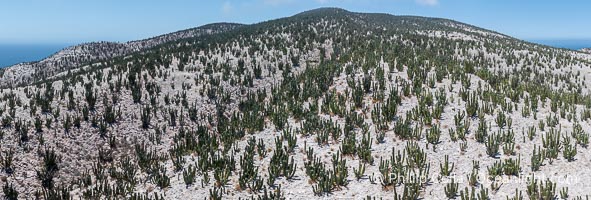
Extensive Forest of Cardon Cactus on the Summit Ridge of San Pedro Martir Island, Sea of Cortez, Mexico. The island and its marine life are, since 2002, part of the San Pedro Martir Biosphere Reserve, and is regarded as a natural laboratory of adaptive evolution, similar to that of the Galapagos Islands. It is home to 292 species of fauna and flora (both land-based and aquatic), with 42 species protected by Mexican law, and 30 listed on the Red List of Threatened Species. San Pedro Martir is also unique in the area for its year-round quantity of birds. The island is the only island in the area with a perpetually swirling cloud of sea birds. This is because the water around the island, has some of the most successful marine productivity in the world.
Location: Isla San Pedro Martir, Sonora, Mexico
Image ID: 40386
Panorama dimensions: 3391 x 10022
Location: Isla San Pedro Martir, Sonora, Mexico
Image ID: 40386
Panorama dimensions: 3391 x 10022
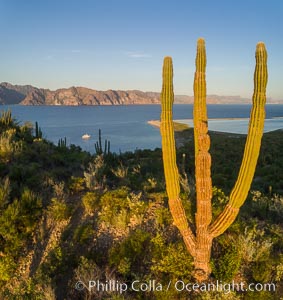
Cardon Cactus on Isla San Jose, Aerial View, Baja California.
Species: Cardon cactus, Elephant cactus, Pachycereus pringlei
Location: Isla San Jose, Baja California, Mexico
Image ID: 33624
Species: Cardon cactus, Elephant cactus, Pachycereus pringlei
Location: Isla San Jose, Baja California, Mexico
Image ID: 33624
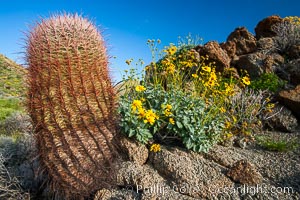
Barrel cactus, brittlebush and wildflowers color the sides of Glorietta Canyon. Heavy winter rains led to a historic springtime bloom in 2005, carpeting the entire desert in vegetation and color for months.
Species: Red barrel cactus, Encelia farinosa, Ferocactus cylindraceus
Location: Anza-Borrego Desert State Park, Borrego Springs, California
Image ID: 10899
Species: Red barrel cactus, Encelia farinosa, Ferocactus cylindraceus
Location: Anza-Borrego Desert State Park, Borrego Springs, California
Image ID: 10899
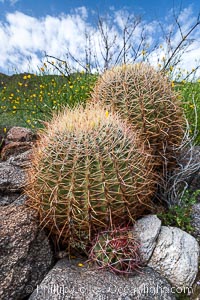
Barrel cactus, Glorietta Canyon. Heavy winter rains led to a historic springtime bloom in 2005, carpeting the entire desert in vegetation and color for months.
Species: Red barrel cactus, Ferocactus cylindraceus
Location: Anza-Borrego Desert State Park, Borrego Springs, California
Image ID: 10906
Species: Red barrel cactus, Ferocactus cylindraceus
Location: Anza-Borrego Desert State Park, Borrego Springs, California
Image ID: 10906
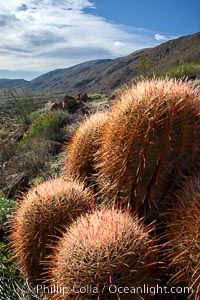
Red barrel cactus, Glorietta Canyon, Anza-Borrego Desert State Park.
Species: Red barrel cactus, Ferocactus cylindraceus
Location: Anza-Borrego Desert State Park, Borrego Springs, California
Image ID: 24302
Species: Red barrel cactus, Ferocactus cylindraceus
Location: Anza-Borrego Desert State Park, Borrego Springs, California
Image ID: 24302
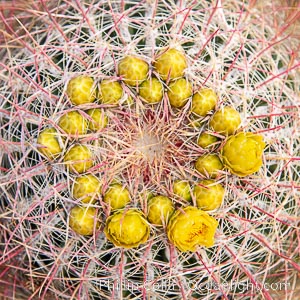
Red barrel flower bloom, cactus detail, spines and flower on top of the cactus, Glorietta Canyon, Anza-Borrego Desert State Park.
Species: Red barrel cactus, Ferocactus cylindraceus
Location: Anza-Borrego Desert State Park, Borrego Springs, California
Image ID: 24303
Species: Red barrel cactus, Ferocactus cylindraceus
Location: Anza-Borrego Desert State Park, Borrego Springs, California
Image ID: 24303
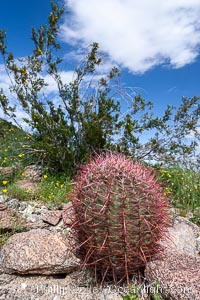
Barrel cactus, Glorietta Canyon. Heavy winter rains led to a historic springtime bloom in 2005, carpeting the entire desert in vegetation and color for months.
Species: Red barrel cactus, Ferocactus cylindraceus
Location: Anza-Borrego Desert State Park, Borrego Springs, California
Image ID: 10905
Species: Red barrel cactus, Ferocactus cylindraceus
Location: Anza-Borrego Desert State Park, Borrego Springs, California
Image ID: 10905
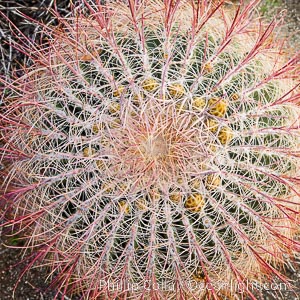
Red barrel cactus detail, spines on top of the cactus, Glorietta Canyon, Anza-Borrego Desert State Park.
Species: Red barrel cactus, Ferocactus cylindraceus
Location: Anza-Borrego Desert State Park, Borrego Springs, California
Image ID: 24308
Species: Red barrel cactus, Ferocactus cylindraceus
Location: Anza-Borrego Desert State Park, Borrego Springs, California
Image ID: 24308
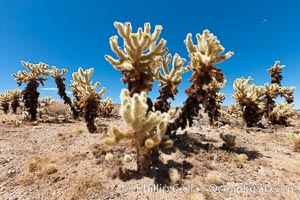
Teddy-Bear cholla cactus. This species is covered with dense spines and pieces easily detach and painfully attach to the skin of distracted passers-by.
Species: Teddy-bear cholla, Opuntia bigelovii
Location: Joshua Tree National Park, California
Image ID: 26773
Species: Teddy-bear cholla, Opuntia bigelovii
Location: Joshua Tree National Park, California
Image ID: 26773
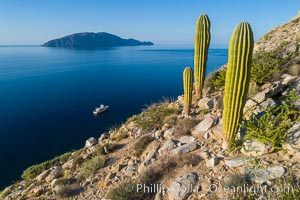
Cardon Cactus on Isla San Diego, Aerial View, Baja California.
Species: Cardon cactus, Elephant cactus, Pachycereus pringlei
Location: Isla San Diego, Baja California, Mexico
Image ID: 33574
Species: Cardon cactus, Elephant cactus, Pachycereus pringlei
Location: Isla San Diego, Baja California, Mexico
Image ID: 33574
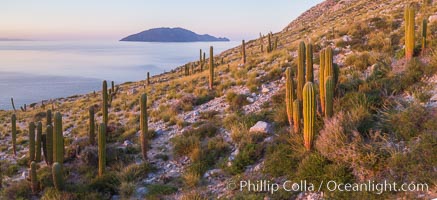
Cardon Cactus on Isla San Diego, Aerial View, Baja California.
Species: Cardon cactus, Elephant cactus, Pachycereus pringlei
Location: Isla San Diego, Baja California, Mexico
Image ID: 33576
Species: Cardon cactus, Elephant cactus, Pachycereus pringlei
Location: Isla San Diego, Baja California, Mexico
Image ID: 33576
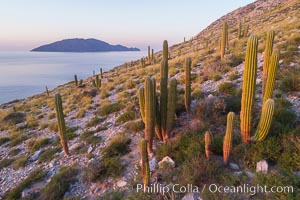
Cardon Cactus on Isla San Diego, Aerial View, Baja California.
Species: Cardon cactus, Elephant cactus, Pachycereus pringlei
Location: Isla San Diego, Baja California, Mexico
Image ID: 33577
Species: Cardon cactus, Elephant cactus, Pachycereus pringlei
Location: Isla San Diego, Baja California, Mexico
Image ID: 33577
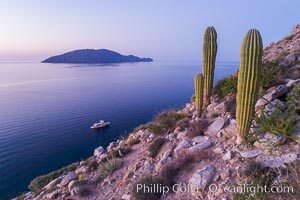
Cardon Cactus on Isla San Diego, Aerial View, Baja California.
Species: Cardon cactus, Elephant cactus, Pachycereus pringlei
Location: Isla San Diego, Baja California, Mexico
Image ID: 33578
Species: Cardon cactus, Elephant cactus, Pachycereus pringlei
Location: Isla San Diego, Baja California, Mexico
Image ID: 33578
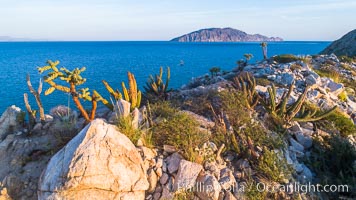
Cardon Cactus on Isla San Diego, Aerial View, Baja California.
Species: Cardon cactus, Elephant cactus, Pachycereus pringlei
Location: Isla San Diego, Baja California, Mexico
Image ID: 33581
Species: Cardon cactus, Elephant cactus, Pachycereus pringlei
Location: Isla San Diego, Baja California, Mexico
Image ID: 33581
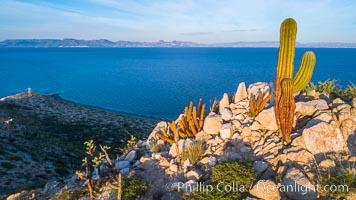
Cardon Cactus on Isla San Diego, Aerial View, Baja California.
Species: Cardon cactus, Elephant cactus, Pachycereus pringlei
Location: Isla San Diego, Baja California, Mexico
Image ID: 33582
Species: Cardon cactus, Elephant cactus, Pachycereus pringlei
Location: Isla San Diego, Baja California, Mexico
Image ID: 33582
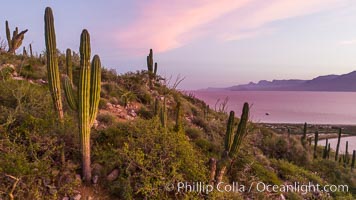
Cardon Cactus on Isla San Jose, Aerial View, Baja California.
Species: Cardon cactus, Elephant cactus, Pachycereus pringlei
Location: Isla San Jose, Baja California, Mexico
Image ID: 33622
Species: Cardon cactus, Elephant cactus, Pachycereus pringlei
Location: Isla San Jose, Baja California, Mexico
Image ID: 33622
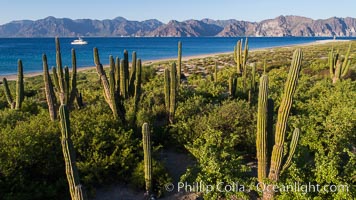
Cardon Cactus on Isla San Jose, Aerial View, Baja California.
Species: Cardon cactus, Elephant cactus, Pachycereus pringlei
Location: Isla San Jose, Baja California, Mexico
Image ID: 33625
Species: Cardon cactus, Elephant cactus, Pachycereus pringlei
Location: Isla San Jose, Baja California, Mexico
Image ID: 33625
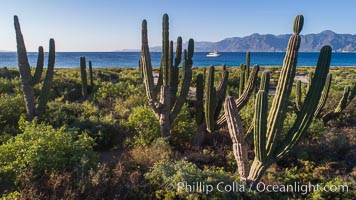
Cardon Cactus on Isla San Jose, Aerial View, Baja California.
Species: Cardon cactus, Elephant cactus, Pachycereus pringlei
Location: Isla San Jose, Baja California, Mexico
Image ID: 33626
Species: Cardon cactus, Elephant cactus, Pachycereus pringlei
Location: Isla San Jose, Baja California, Mexico
Image ID: 33626
